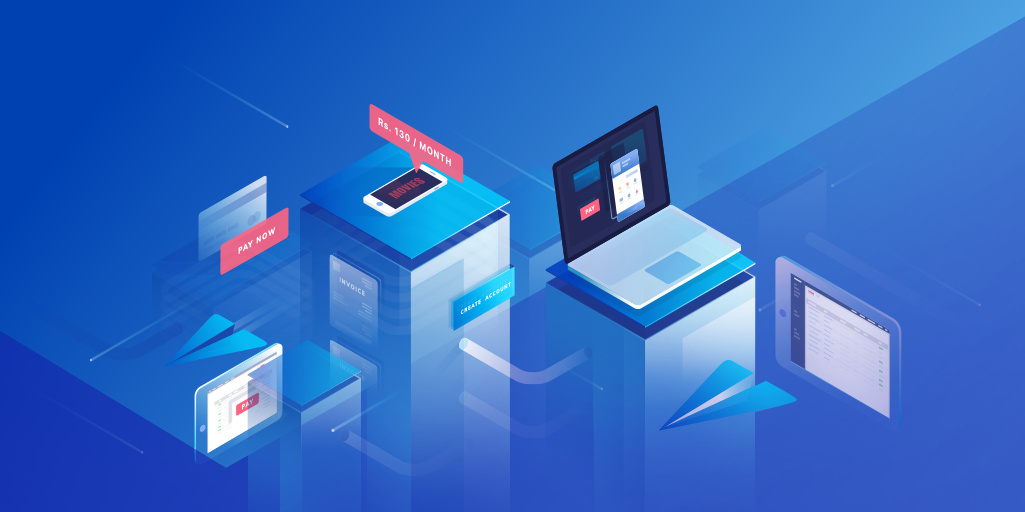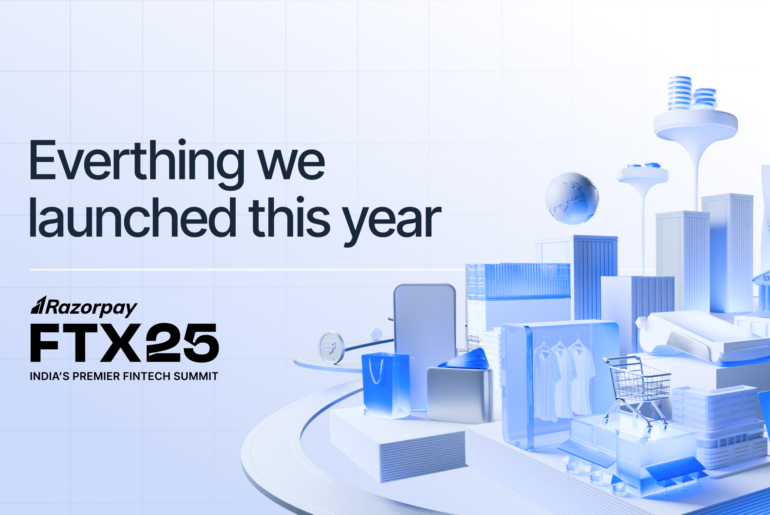What comes to your mind when you hear the term ‘online payments’? Do you think of online businesses like Flipkart, Amazon and Snapdeal? Or maybe the likes of Zomato, Udacity, Goibibo come to your mind?
You might think that the whole process of opening an app or a website, selecting a few products or services and then paying online is fairly straightforward.
This sounds like a simple enough process, right? I mean, how difficult could it be for businesses to accept payments online? Back in 2014, turns out it was way too difficult, and this is what we wanted to tackle when we made the public launch of Razorpay.
All our market studies, competitor analysis & insights pointed towards key issues in payments, a critical part of online commerce. Onboarding was a pain, integration a nightmare.
Support was almost non-existent and you’d be lucky if the executive on the other side understood what an API was. And if you did manage to get it up and running, issues every day would still plague your business.
But we decided to tackle this.
Getting Our Feet Wet
We’ve spent the last two and half years chipping away at the various nitty gritties of this domain. We started off with a promise of complete online onboarding, powerful APIs for getting things done and an integration that just works.
Our pitch to prospective clients was that Razorpay will be the only gateway you will ever need to integrate. In fact, we were the first to launch UPI acceptance for businesses, further strengthening our pitch.
Fast forward to today, we now have a wide spectrum of paying customers, right from the new age upcoming startups to the industry heavyweights like Goibibo, Zomato, Yatra, DSP Blackrock among others. Our transaction volumes have been growing exponentially, month over month.
And with such a major push by the government for digital economy, the market has only expanded.
Things look quite rosy for us. I personally feel that with Razorpay, we were in the right place at the right time. If we had launched a year earlier or a year later, our situation might have been very different.
We got the time to master the nuances of various possible payment gateway integrations before the vertical exploded into rapid growth phase.
Maybe now if we can successfully convert our sales into a playbook, keep adding support for new payment modes and in general keep giving a much better service, we should be golden, right? Turns out there is much more to this, many more opportunities.
Learning on the field
One of the advantages of being in the B2B domain is the opportunity for close collaboration with your clients. Across quite a few client meetings, a recurring theme started appearing: the money flows of businesses vary vastly.
While there were many with the straightforward model of website or app offering customers option to checkout, there are quite a few without any website or app who operate their entire business through invoices and payment links.
And then there are some collecting payments through NEFT/RTGS/IMPS. And this is just one half of the story.
Another common theme eminent in the market is the marketplace model. Basically a business which is just a platform that connects sellers and customers. And this isn’t specific to e-commerce again.
All contractor based on-demand business models for services like electrician/beautician/handyman/cab-hailing have a third party providing the service. In such cases the money flow does not end at the platform itself but when the contractor is paid their due.
And then there are businesses in the SAAS industry or rental space like Udacity, Rentomojo among others for whom subscription payments is the primary payment model but the end customer makes manual payments every month, instead of the account being debited automatically.
The surprising aspect for us was that even though these models are very common, there were either no solutions available or the ones that were had various issues with ease-of-use, solving for scale and the integration effort. There was just no one single platform solving all these problems.
This realisation sowed the seed for Razorpay 2.0.
Introducing Razorpay 2.0

Over the past one & half years, we’ve been hard at work with some of our key clients working on building various products to solve for the uncontemporary parts of the payment flow.
We now have evolved from being a pure payment gateway to a converged payments solution, making us the first Indian fintech company to offer end-to-end payment solutions.
With our products, merchants can handle all aspects related to the flow of money, right from the moment when the payment is initiated to the point it is fully reconciled and disbursed to the final destination.
We now have a multi-product suite with the additions of the following:
- Designed to control the flow of money, Razorpay Route provides an efficient end-to-end solution for businesses to manage marketplaces, split payments, and facilitate vendor payouts
- Built to automate NEFT/RTGS/IMPS collections, Razorpay Smart Collect allows businesses to generate virtual account numbers in order to reduce manual intervention, as all collections through bank transfers are reconciled in one place
- Developed to benefit businesses with recurring billing models, Razorpay Subscriptions helps manage scheduled payments, create different pricing plans and track all payment activity from a single subscriptions platform
- Designed as an interactive solution, Razorpay Invoices and Payment Links efficiently collect payments from customers for merchants who do not have a website or an app
With these products in place, Razorpay can now manage the what, when, where and how of payments.
Watch this video to find out how the future of payments looks like:
[youtube https://www.youtube.com/watch?v=iD6jwYwdlGQ]
One of our major focus was on making these products play well with each other, in order to enable complex use cases too.
For example, a business can have subscription billing set for their customers and each time a payment comes in, they can split it using Razorpay Route. I am personally very confident that we can now power even the most complex of use cases that a business may opt for.
Rebranding Razorpay & the Road Ahead
Along with this launch we decided to overhaul our brand. While we were very fond of the brand that Razorpay represented the last few years, with us becoming a multi-product company, it was important for us to make sure our brand could extend with this product suite.
While the name remains the same, we decided to give our logo a makeover to reflect our focus on making payments simple while maintaining a razor sharp look and feel. We now also have a new tagline and a completely new design language to showcase the future of payments.
Over the next few weeks we will be extending this to all our existing products and digital assets with the hope to make it synonymous with payments.
Launching new products is just the first chapter in a multi volume story. We have a long way to go before we can call this a success. We will continue to innovate, develop new solutions and empower businesses. We have our sights set on building a world class payments platform.
Everyone in our team is more eager than ever and brimming with passion to bring to everyone the future of payments.



